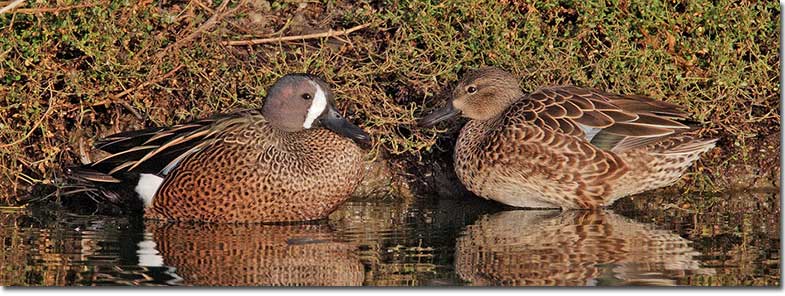
Blue-winged Teal – Length: 15 inches Wing span: 23 inches
Blue-winged Teal are widespread and numerous, though their population has ups and downs depending on habitat conditions (wetter years tend to be better for ducks) and nest predation, which in some years can destroy up to 90% of nests. Adult Blue-winged Teal have an average maximum life span of about 12 years, which is a bit less than for similar ducks.
Like most ducks, Blue-winged Teal lay relatively large clutches, usually about 10 eggs, to help make up for the large number of nests that are lost to predators such as foxes, coyotes, hawks, and Great Horned Owls. Ring-necked Pheasants occasionally lay eggs in teal nests.
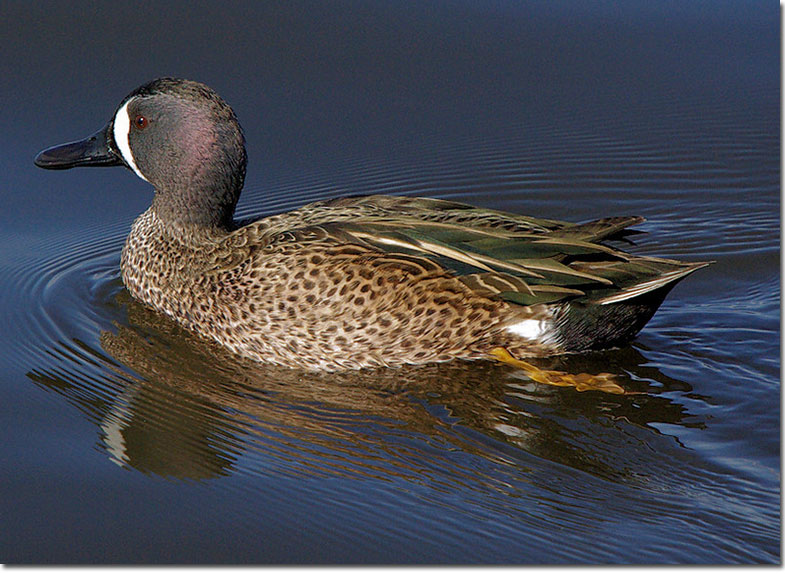
Males are easy to identify by the white crescent at the base of the bill. The head often looks dark, without the pinkish hue which is only seen in good lighting. Photograph © Steve Wolfe.
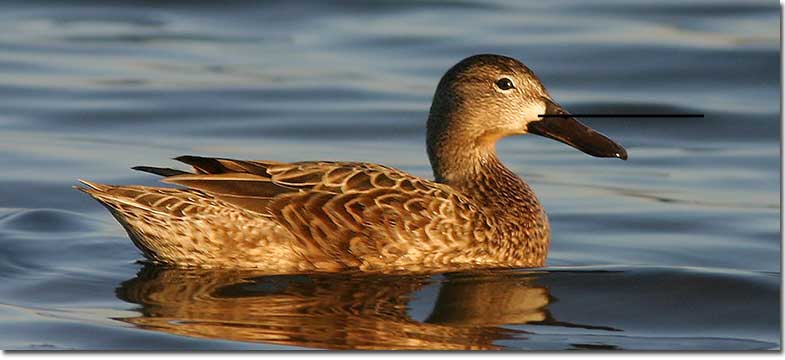
Females are a rather plain looking brown. The incomplete white eye ring is not always visible. The white area at the base of the bill generally stronger than on the similar female Cinnamon Teal or the Green-winged Teal. Photograph © Tom Grey.
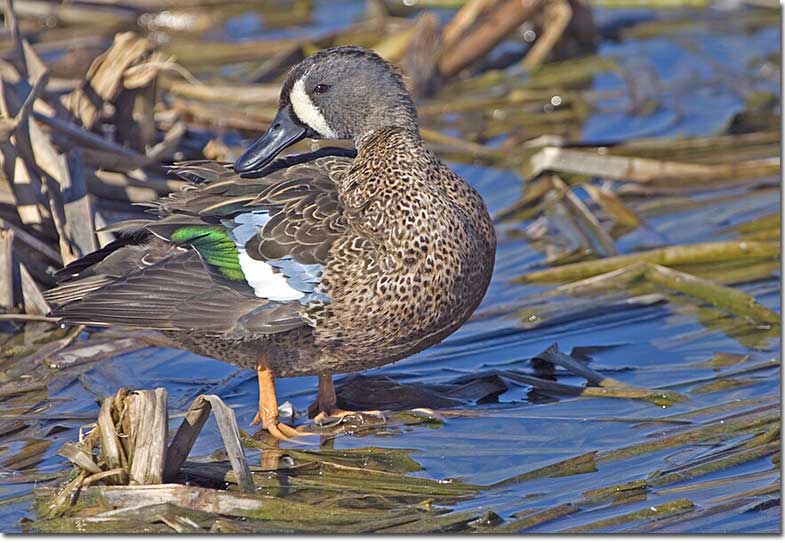
The colorful wing pattern is easy to see in this image. Photograph © Alan Wilson.
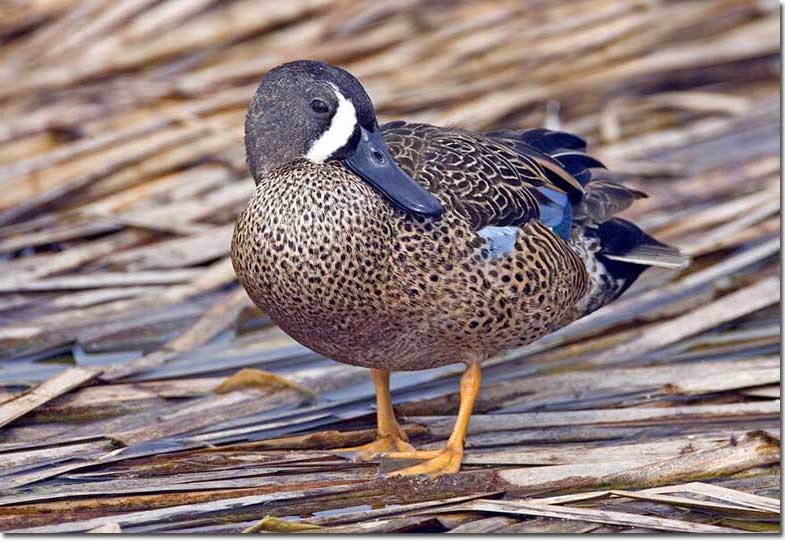
Note the pale orange legs. Photograph © Alan Wilson.
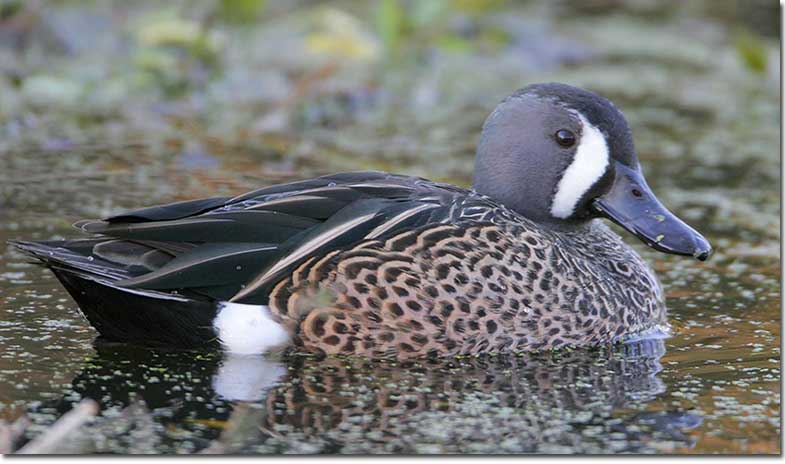
The pinkish hue on the head and sides are visible in this excellent photograph by Greg Lavaty.
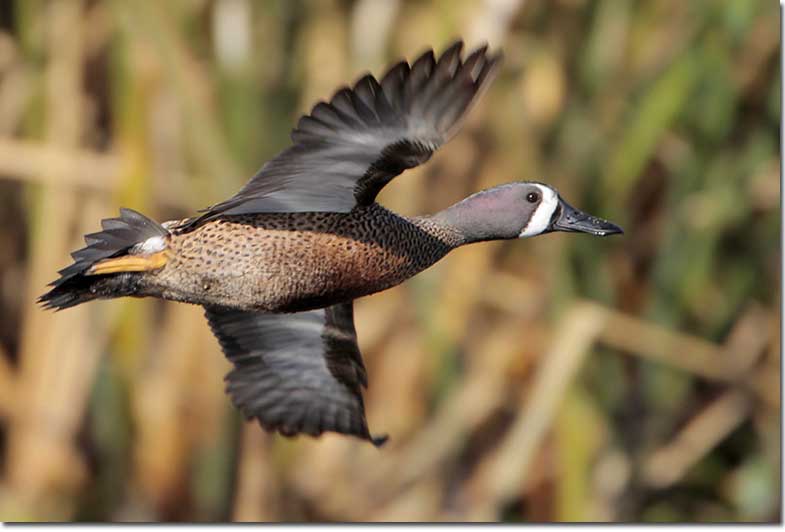
White wing linings are broad, rusty chest. Photograph by Greg Lavaty.
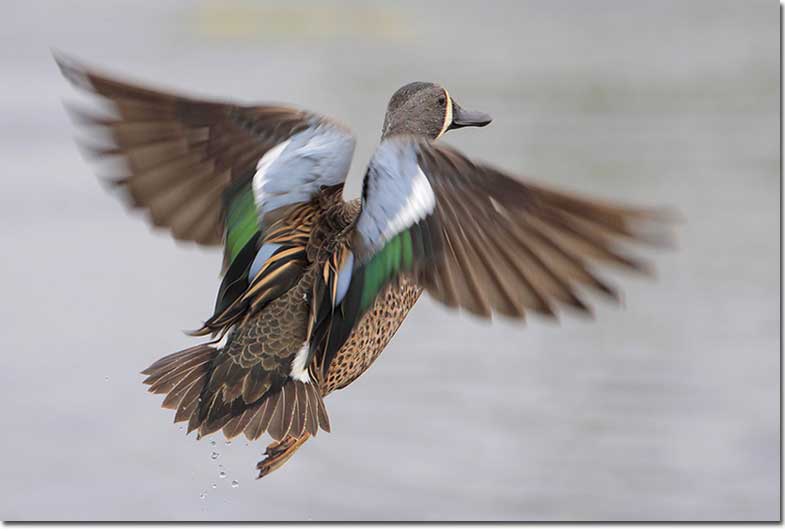
The blue, white and green pattern on the wings are clearly visible. Photograph by Greg Lavaty.
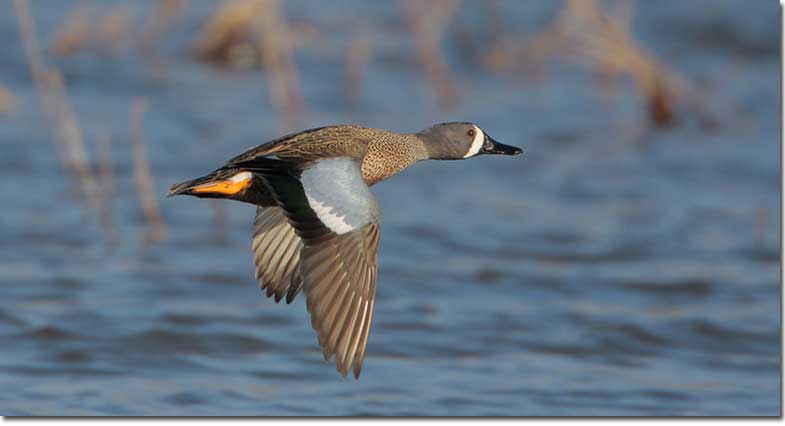
Blue-winged Teal are strong fliers and migrate all the way to South America for the winter, making this species our only neotropic migrant duck.
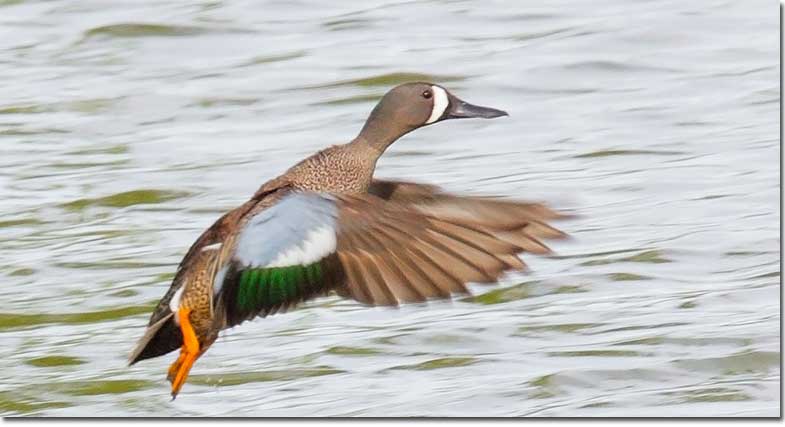
Wings outspread during take-offs and landing. Photograph by Tom Grey.
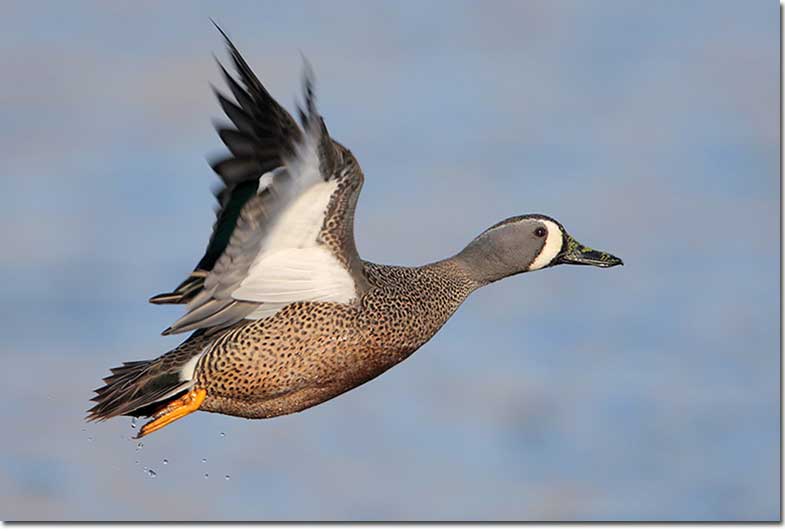
White wing linings are bordered in gray. Photograph © Greg Lavaty.
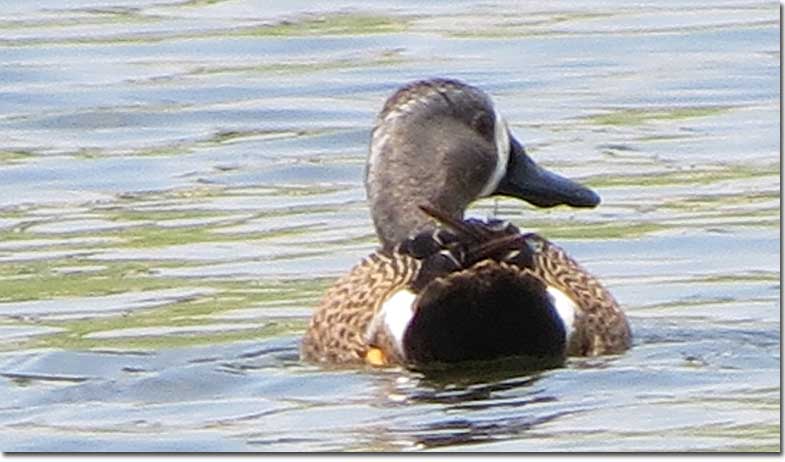
The white crescent on the face makes this an easy identification. What markings could you use if the bird was facing away? Photograph © Sam Crowe.
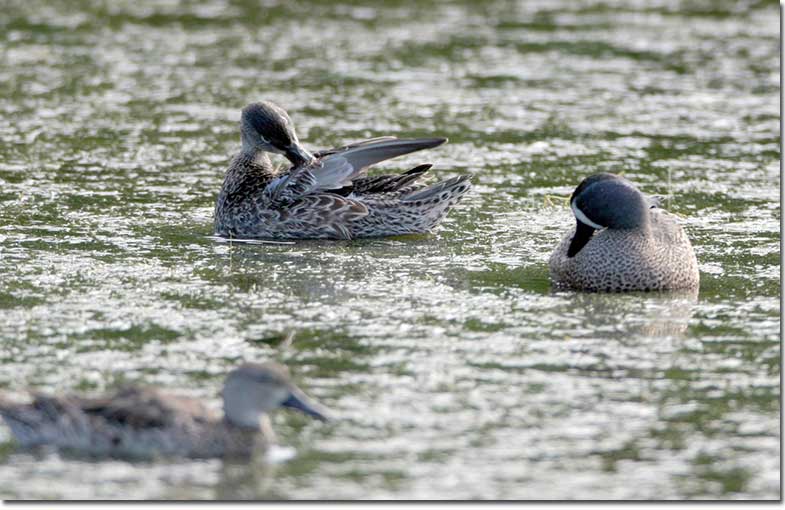
Note the spots under the tail on the female teal. Photograph © Sam Crowe.
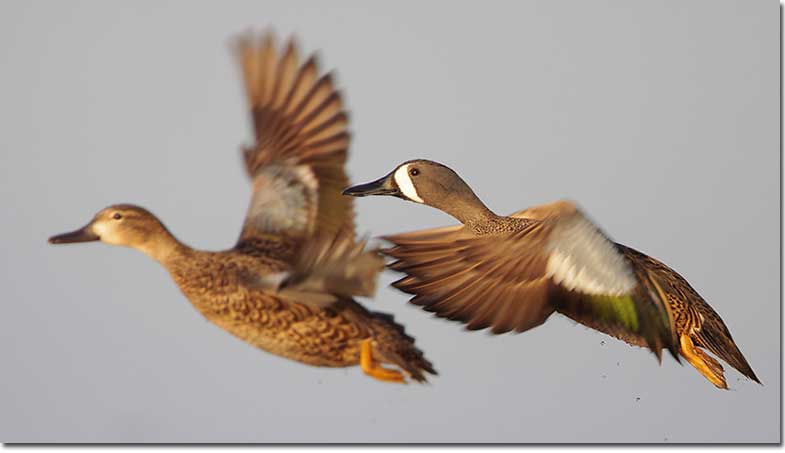
Pair in flight. Note the broken eye ring and the dark line through the eye on the female. Easy to see in a photograph, not so easy when the duck is moving.
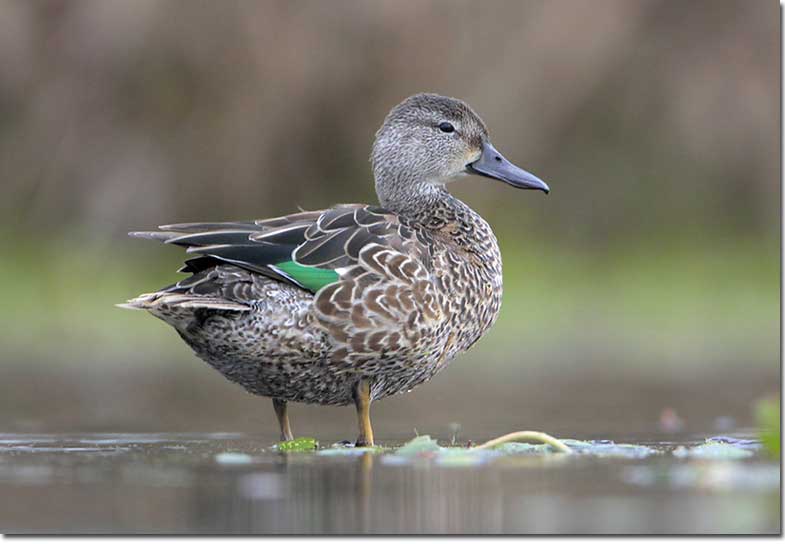
Note the green speculum showing on this Blue-winged Teal, perhaps leading to mis-identification as a Green-winged Teal. Several species of dabbling ducks have green speculums. Also note the fairly large bill. Photograph by Greg Lavaty.
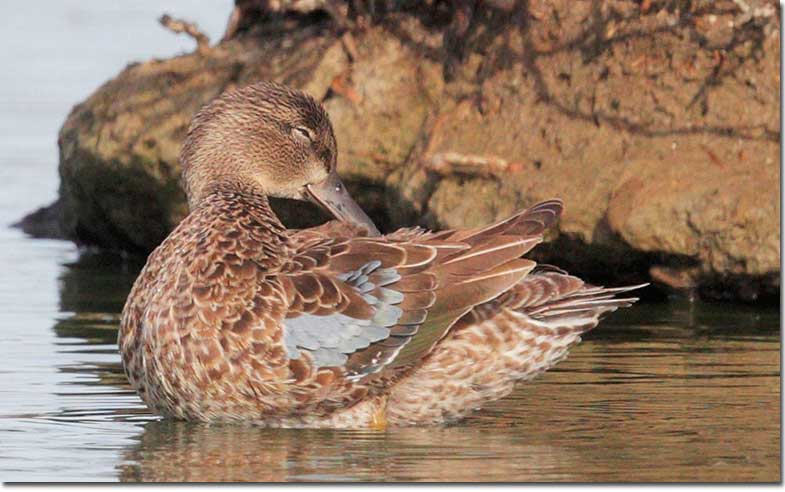
Preening female. Photograph © Tom Grey.
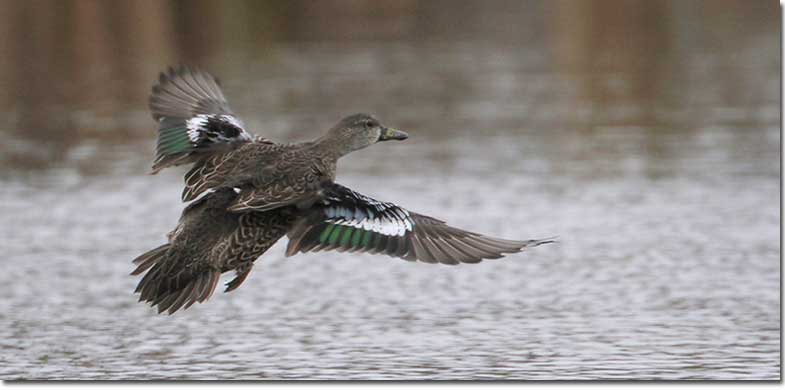
Female in flight. The wing color combination and dark line through the eye are good ID marks. Photograph © Greg Lavaty.
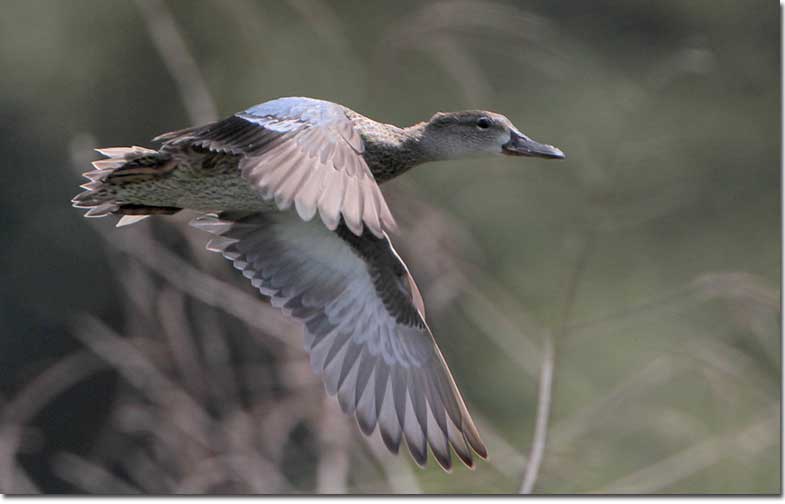
Another good view showing all the plumage characteristics of the female Blue-Winged Teal. Also note that Blue-wings have a fairly large bill, larger than the Green-winged Teal and smaller than the Cinnamon Teal. Photograph © Greg Lavaty.
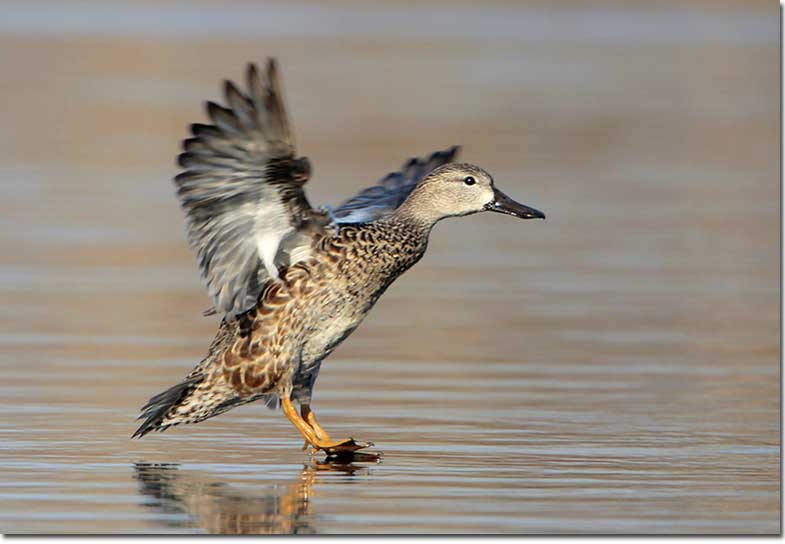
Female coming in for a landing. Note the orangish legs and spots under the tail. Photograph © Greg Lavaty.
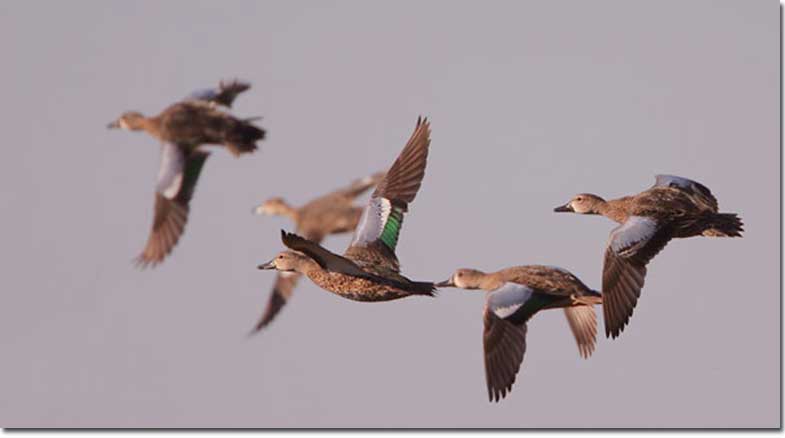
The female in this photo shows the nice blue, white and green pattern on the upperside of the wing. Photograph © Greg Lavaty.
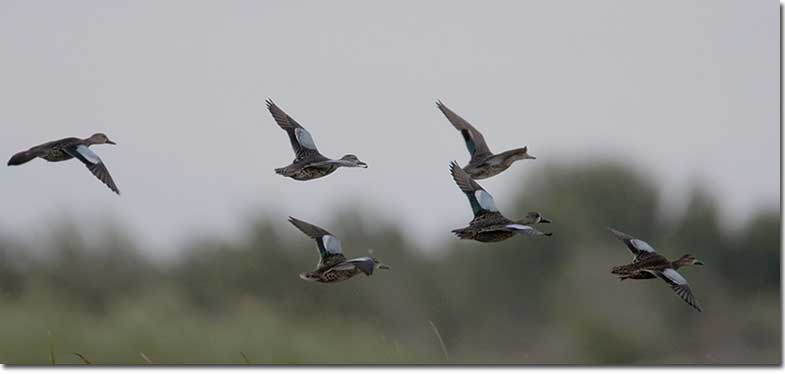
The green speculum is often not visible when the birds are in flight. Photograph © Greg Lavaty.
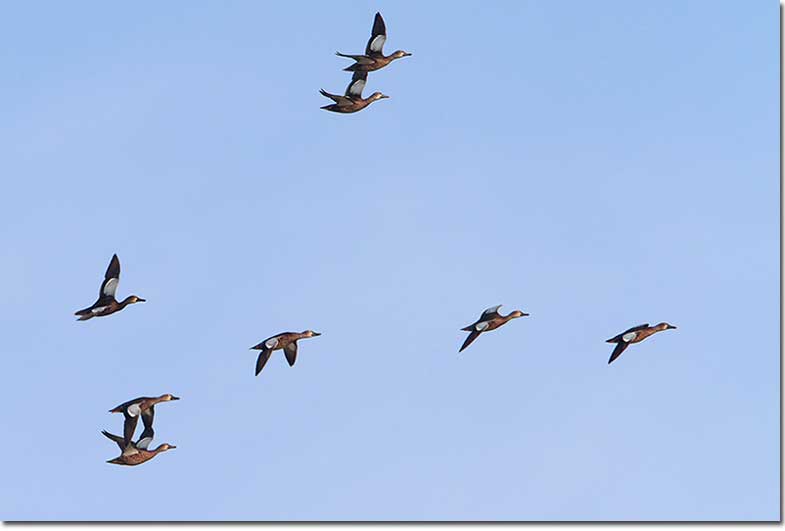
Wings are narrow and pointed. Photograph © Greg Lavaty.
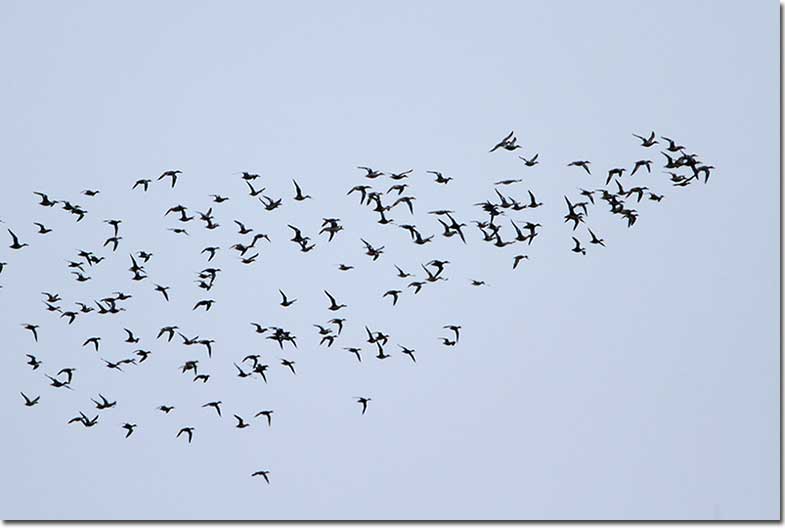
Migrates in flocks. Flight patterns includes quick turns and twists done in unison, similar to many shorebird species. Photograph © Greg Lavaty.

